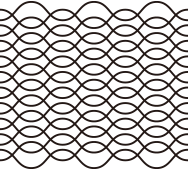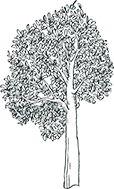
Embark on a journey to explore more possibilities

Spring mattress
As the core supporting component of a mattress, springs play a decisive role in determining key performance aspects such as the mattress's supportiveness, comfort, and anti-disturbance capability. The application of different types of springs in mattresses results in diverse performance characteristics, catering to the sleep needs of various groups of people.

Horsehair
The application of horsehair in mattresses is primarily based on its unique physical properties, which can endow mattresses with rich and delicate resilience, excellent air permeability and moisture-wicking performance, health benefits such as antibacterial and anti-mite effects, as well as outstanding durability.
-

Foam
Foam mattresses have diverse characteristics: Their porous honeycomb structures can adapt to the human body's curves and weight, offering support and a wrapping sensation; they can disperse pressure, reduce pressure points to improve sleep quality; some have excellent air permeability, enabling sweat evaporation and heat dissipation, while others with poor air permeability may make people feel stuffy and hot.
-

3D Fabric
The advantages of 3D fabric are prominent: It offers excellent support, enabling overall relaxation; it has good air permeability, with its hollow structure facilitating air circulation and heat dissipation to keep the bed dry and cool; it can inhibit mites and prevent allergies; and it has superior resilience, being easily bendable to protect the body. Therefore, it is widely used in the mattress industry.
-

Jute fiber
The leaves of jute are ovate or narrowly lanceolate, with an acuminate apex, a rounded base, and finely serrated margins. The flowers are arranged in axillary cymes, with yellow, obovate petals. The capsule is globose, with an apex that is hornless but has longitudinal ridges and tuberculate protrusions. The flowering period is from July to September, and the fruiting period is from September to November. The plant gets its name from the golden, silky luster of its fibers.
-

Soybean fiber
Soybean fiber is produced using soybean meal (a byproduct of oil extraction) or food-grade soy protein powder as raw materials. Through biotechnological engineering, globulin is extracted from these materials, followed by the addition of functional additives. The globulin is then subjected to grafting, copolymerization, and blending processes with high polymers such as nitrile groups and hydroxyl groups to form a protein spinning solution with a specific concentration. Finally, soybean fiber is manufactured through a wet spinning process.
-

Silk
-

Negative ion wadding
-

Linen
-

Trachycarpus Fortunei
Learn MoreMattresses made from Trachycarpus fortunei exhibit good resilience and supportive qualities, effectively protecting the health of the human spine.
-

VONATURE AIR™
Learn MoreVONATURE AIR™, also known as Polyolefin Elastomer (POE), colorless or milky white waxy particles, non-toxic, odorless. Melting point: 85 to 110°C.
-

Coconut Fiber
Learn MoreCoir, also known as coconut fiber, is made from the coconut husk, which is present between the outer and inner walls of the coconut.
-

Sisal Fiber
Learn MoreSisal fibers are obtained from the eponymous plant of the genus Agave. Among all natural plant fibers, sisal fibers have the highest elongation value.
-

Corn Fiber
Learn MoreCorn fiber is a synthetic fiber produced using corn, wheat, and other starch-based materials as raw materials, through processes such as polymerization and spinning.
-

Natural Latex
Learn MoreNatural latex, an environmentally friendly adhesive, is the liquid that comes out of the cuts of rubber trees that have been growing for 6-8 years.
-

Cotton
Learn MoreCotton fiber is a natural fiber, with cellulose as its major constituent. It is also a porous material that allows for effective air permeability, keeping the skin comfortable.
-

Raw Material Application
View NowHere, you can learn about the applications of various raw materials in products, which will facilitate your selection of raw materials as a reference.

Contact Us
Contact Number
Mobile: (86) 15508516927
Mobile: (86) 17761206576
lynn: lynn@vonature.com
miko: miko@vonature.com
Leave your contact information
















